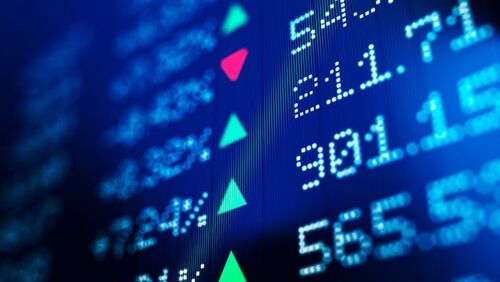US Navy contracts helped Aussie ship builder conquer the seas
By Chris Batchelor
The Jones Act, which has been in place in the US since 1920, requires that ships that trade between US ports must be built, manned, and flagged in the US. Also, all military vessels must be built in the US.
US ship builders are protected from foreign competitors for ships built for domestic purposes as well as military purposes. This law has survived 100 years to ensure that the US is self-reliant in terms of its shipping needs in the event of war.
ASX-listed Austal (ASX:ASB) is based out of Western Australia. In 2000, the company set up a US subsidiary in Mobile, Alabama.
This facility has enabled Austal to supply ships conforming to the Jones Act, and it is now one of the largest defence shipyards in the USA and the fifth largest shipyard overall. As the only foreign owned prime contractor building defence vessels, Austal has more than 4500 staff and over the last 20 years it has completed, is constructing, or has on order 33 US Navy vessels.
More recently the company has been expanding its footprint in Asia. Aside from the Perth facilities, it has a well-established shipyard in Cebu, Philippines, and recently commenced operations in Vietnam. There's also a joint venture in China.
From these facilities they supply commercial and defence customers worldwide, specialising in high speed vessels with monohull, catamaran and trimaran designs. They are the world's largest aluminium ship builder and are also building steel boats from their Australian facilities.
Ship building is a capital intensive exercise. Austal's return on assets is less than 5%. Margins are thin with an operating margin of 4.6% and net profit margin of only 3.3% in 2019. Return on equity (ROE) was 10.4% but this was the first time since 2015 that ROE was double digits. In 2016, profits drifted into a loss as they underestimated the costs to complete the US Navy vessels.
On the plus side revenues and profits have been growing strongly over the last few years with earnings per share increasing from five cents two years ago to 18 cents this year.
The order book was $4.9 billion at the end of June which was $2 billion higher than a year prior. The firm subsequently received an order from Danish ferry company Molslinjen for a 115-metre high speed ferry.
The contract value is $A136 million and will be the largest ship Austal has ever built. It will be built from its Philippines facility with construction commencing in the third quarter of 2020 and delivery in the first quarter 2022.
Total revenue in 2019 was $1.85 billion and is forecast to exceed $2 billion in 2020. The US business is the largest contributor to revenue and profits, accounting for 80% of revenue. EBIT margins in the US are 7.2% compared with 3% for Australasia.
In addition to revenue from ship building Austal is also experiencing growth in their support services with revenue from this segment of almost $300 million.
Management remain confident in the ongoing growth opportunities. They are investing heavily in R&D and have good ship building capacity with the recently acquired facilities in Vietnam giving them a total of seven shipyards globally.
There is ongoing demand as customers look to replace their aging fleets with new, fast and more environmentally friendly vessels. New vessels are also designed to provide greater passenger comfort (they are less prone to sea sickness).
Austal are currently bidding for two new navy programs in the US, one which would include up to 10 boats and the other a project for an unmanned surface vessel.
They are also a strong bidder for a Philippines Navy project for six offshore patrol vessels worth approximately $A800m. An announcement is expected in FY20. Having a facility in Cebu will help as it will add to jobs and investment in the Philippines and provide good access for support.
Cash flows are lumpy as cash is received as project milestones are met, but over the last 10 years operating cash flow has exceeded net profits by 1.8 times, which is a strong result. The balance sheet is strong with cash exceeding financial debt.
The good news coming out of Austal over the last two years has not gone unnoticed. The share price has risen 85% over the last year and the forecast PE ratio is approaching 20.
The ship building business is subject to plenty of risks. In addition to the risk of cost overruns, there are risks surrounding the allocation of funds from government budgets for defence vessels. Going to sea has never been risk free, but handsome rewards await a well-planned voyage. If Austal can continue to deliver, it may be smooth sailing ahead for investors.
Get stories like this in our newsletters.



